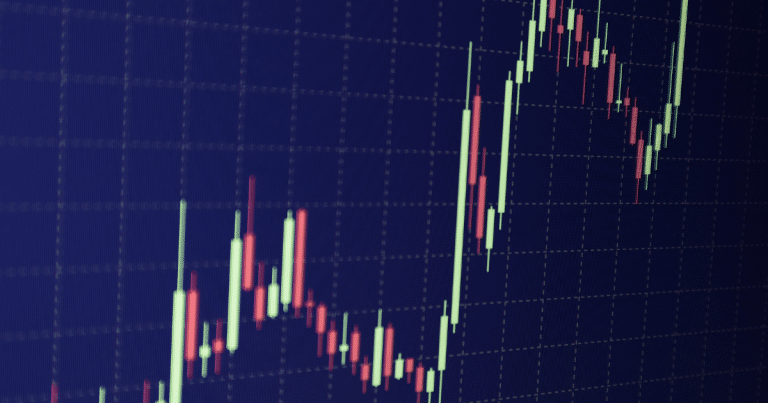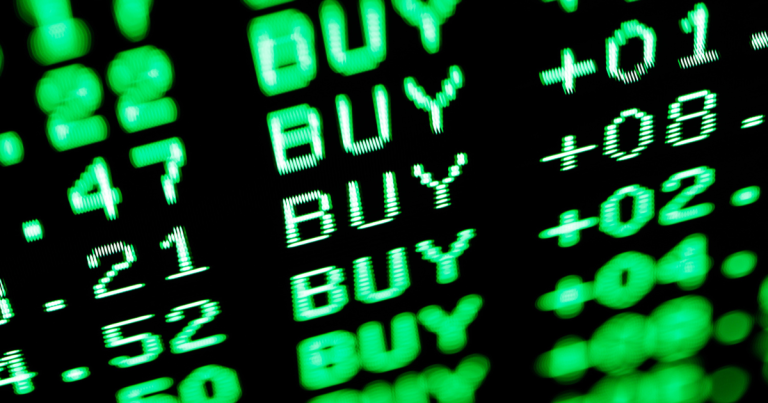
Getting the Hang of Moving Averages
Moving averages are like the secret sauce in stock trading, helping traders figure out price trends over time. The two big players here are the Simple Moving Average (SMA) and the Exponential Moving Average (EMA).
Simple Moving Average (SMA) 101
The Simple Moving Average (SMA) is pretty straightforward. You add up the prices of a stock over a set period and then divide by the number of days. This smooths out the price data, making it easier to spot trends. Here’s the formula:
SMA = Sum of Prices over Period Number of PeriodsLet’s break it down with a 5-day example:
| Day | Closing Price |
|---|---|
| 1 | $20 |
| 2 | $22 |
| 3 | $21 |
| 4 | $23 |
| 5 | $24 |
| SMA (5 Days) | $22 |
So, you take the closing prices from the last five days, add them up, and divide by five. Boom, you get $22. SMA is great for spotting long-term trends because it smooths out the noise from daily price changes (Medium).
Exponential Moving Average (EMA) 101
The Exponential Moving Average (EMA) is a bit fancier. It also tracks trend direction but gives more weight to recent prices. This makes it quicker to react to price changes. The formula is a bit more complex, involving a smoothing factor that prioritizes recent data.
EMA = ( Current Price × Smoothing Factor ) + ( Previous EMA × (1 – Smoothing Factor )The smoothing factor is usually:
Smoothing Factor = 2 n + 1 (where n is the number of periods)For a 5-day EMA, the smoothing factor would be 0.3333. Here’s how it looks in action:
| Day | Closing Price | EMA (5 Days) |
|---|---|---|
| 1 | $20 | $20 |
| 2 | $22 | $20.67 |
| 3 | $21 | $20.89 |
| 4 | $23 | $21.67 |
| 5 | $24 | $22.89 |
The EMA is more sensitive to recent prices, making it super handy in volatile markets (Fidelity, Medium).
Knowing the difference between SMA and EMA can be a game-changer for your trading strategies. Want to dig deeper? Check out our section on moving average types.
Calculating Moving Averages
If you’re diving into stock trading, knowing how to calculate moving averages is a game-changer. Let’s break down the basics of Simple Moving Average (SMA) and Exponential Moving Average (EMA).
SMA Calculation Method
The Simple Moving Average (SMA) is just the average of a set number of prices over a specific time. It’s like finding the average score of your favorite sports team over the last few games. Here’s how you do it:
To calculate a 5-day SMA, use this formula:
SMA = Sum of Prices over 5 Days 5Let’s say these are the closing prices for five days:
| Day | Closing Price |
|---|---|
| 1 | $10 |
| 2 | $12 |
| 3 | $14 |
| 4 | $11 |
| 5 | $13 |
Plugging in the numbers:
SMA = 10 + 12 + 14 + 11 + 13 5 = 60 5 = 12So, the 5-day SMA is $12. This average smooths out the price data, helping you spot trends without getting lost in the daily ups and downs.
EMA Calculation Method
The Exponential Moving Average (EMA) is a bit fancier. It gives more weight to recent prices, making it quicker to react to price changes. Here’s the formula:
EMA = ( Current Price × Multiplier ) + ( Previous EMA × (1 – Multiplier )First, you need the multiplier:
Multiplier = 2 n + 1where ( n ) is the number of periods.
For a 10-day EMA, the multiplier is:
Multiplier = 2 10 + 1 = 2 11 ≈ 0.1818Now, let’s calculate the EMA with some hypothetical data:
| Day | Closing Price | Previous EMA | EMA Calculation |
|---|---|---|---|
| 1 | $10 | N/A | N/A |
| 2 | $12 | $10 | (12×0.1818)+(10×0.8182)=10.73 |
| 3 | $14 | $10.73 | (14×0.1818)+(10.73×0.8182)≈11.97 |
| 4 | $11 | $11.97 | (11×0.1818)+(11.97×0.8182)≈11.63 |
| 5 | $13 | $11.63 | (13×0.1818)+(11.63×0.8182)≈12.15 |
So, the EMA for Day 5 is around $12.15. This method is great for traders who want their averages to be more responsive to recent price changes.
Both SMA and EMA are tools to help you understand market trends and make smarter trading decisions. Want to learn more about different types of moving averages? Check out our section on moving average types.
Comparing SMA and EMA
Key Differences
When you stack up the simple moving average (SMA) against the exponential moving average (EMA), some key differences pop out. These can really shape how you trade and make decisions.
| Feature | Simple Moving Average (SMA) | Exponential Moving Average (EMA) |
|---|---|---|
| Weighting | Equal weight to all data points | More weight to recent prices |
| Responsiveness | Slower to react to price changes | Quicker to react to recent price changes |
| Suitability | Better for stable markets | Great for trending markets |
| Calculation Complexity | Simple, easy to understand | More complex, involves weighting factors |
| Use in Trading | Smoother trends | Highlights recent trends better |
Traders often lean towards the EMA because it’s quicker to pick up on price changes, making it a go-to in fast-moving markets. On the flip side, the SMA gives a smoother trend line but can lag behind, making it a bit slow on the uptake (Investopedia).
Application in Trading
SMA and EMA each have their own sweet spots in trading strategies. Traders use these moving averages to spot trends and figure out when to jump in or bail out.
1. SMA Applications:
- Great for spotting long-term trends and support/resistance levels.
- Smooths out price data, making the overall trend easier to see.
- Typically used in longer time frames for a clearer market direction.
2. EMA Applications:
- Better for short-term trading and catching quick price moves.
- Often paired with other indicators to confirm trends and market moves.
- Super useful in volatile markets where timing is everything (Investopedia).
Some traders mix both SMA and EMA to get the best of both worlds. For example, they might use the SMA to analyze long-term trends and the EMA for pinpointing entry and exit points in a fast-paced market. Want more on this? Check out our moving average trading strategies.
Getting a handle on the differences between SMA and EMA helps traders fine-tune their strategies based on market vibes and personal trading styles.
Picking Between SMA and EMA
When you’re stuck choosing between the Simple Moving Average (SMA) and the Exponential Moving Average (EMA), think about what fits your trading style and the market vibe. Each has its own quirks that can sway your trading game.
What to Think About
- Market Trends: The EMA is your buddy in trending markets because it’s quick to react to recent price changes. It’s like having a fast friend who keeps you updated on the latest gossip. On the flip side, the SMA might be a bit slow on the uptake, giving you old news when you need the latest scoop.
- Trading Style: If you’re a short-term trader or a day trader, the EMA is your go-to. It catches those quick price moves like a pro. But if you’re in it for the long haul, the SMA is your steady companion, smoothing out the bumps over time.
- Volatility: In wild markets, the EMA helps you spot big moves faster. The SMA, while chill, might miss those sudden jumps. If you need to act fast, the EMA’s your guy.
- Mixing with Other Tools: The EMA often teams up with other indicators to confirm trends. Pair it with something like the MACD for a killer combo.
Real-Life Scenarios
| Situation | Best Average | Why |
|---|---|---|
| Strong Uptrend | Exponential Moving Average (EMA) | EMA catches price hikes quickly, helping you ride the wave. |
| Sideways Market | Simple Moving Average (SMA) | SMA cuts through the noise, making it easier to spot support and resistance. |
| High Volatility | Exponential Moving Average | EMA spots trend changes fast, perfect for a rollercoaster market. |
| Long-Term Investment | Simple Moving Average | SMA smooths out the data over time, great for long-term plans. |
By weighing these factors, you can decide whether the SMA or EMA fits your trading style. Match your choice with your goals, the market scene, and how you like to trade. For more on moving average types and how to use them, check out our other articles.
Mastering Moving Average Strategies
Moving averages are like the Swiss Army knife of trading—versatile and handy for spotting trends and making smart moves. Two crowd-favorites are the Moving Average Crossover Strategy and Moving Average Ribbons.
Moving Average Crossover Strategy
This strategy is all about pairing a long-term Simple Moving Average (SMA) with a short-term Exponential Moving Average (EMA). The SMA shows the big picture, while the EMA, often called the signal line, highlights potential buy or sell moments (Nadex).
Here’s the gist: traders buy when the short-term EMA crosses above the long-term SMA from below, hinting at an upward trend. They sell when the short-term EMA dips below the long-term SMA from above, suggesting a downward trend.
| Signal Type | Action | Condition |
|---|---|---|
| Buy | When short-term EMA crosses above long-term SMA | Potential upward trend |
| Sell | When short-term EMA crosses below long-term SMA | Potential downward trend |
For a deeper dive into crossover strategies, check out our guide on exponential moving average crossover strategy.
Moving Average Ribbons
Moving average ribbons are like a visual symphony of multiple moving averages on a price chart. They help traders see the dance between short, intermediate, and long-term trends, making it easier to spot turning points, continuations, and overbought or oversold conditions (Investopedia).
Traders buy when short-term moving averages cross above long-term ones and sell when the opposite happens. When all the moving averages bunch up, it signals a weakening trend and possible reversal. If they spread out, it means the trend is strong or getting stronger.
| Ribbons Condition | Interpretation |
|---|---|
| Convergence of moving averages | Weakening trend, possible reversal |
| Divergence of moving averages | Strong or strengthening trend |
Moving average ribbons can be a goldmine for insights and trigger buy and sell signals. For more on these strategies, check out our article on moving average trading strategies.
Mastering these strategies can level up your trading game, especially when you mix them with other indicators like the moving average convergence divergence.
Advanced Concepts and Tips
Making Sense of Moving Averages
Alright, let’s break down moving averages in a way that doesn’t make your head spin. Moving averages are like the stock market’s mood rings. They help traders figure out if the market’s feeling bullish or bearish. You’ve got two main types: the Simple Moving Average (SMA) and the Exponential Moving Average (EMA).
The SMA is like your grandma’s old recipe—reliable but a bit slow. It averages out prices over a set period, giving you a smooth trend line. But, it can be a bit behind the times. On the flip side, the EMA is like your tech-savvy cousin. It gives more weight to recent prices, making it quicker to react to market changes. This makes the EMA a favorite for those who want to catch trends early (Investopedia).
| Indicator Type | Speed | Best Use |
|---|---|---|
| Simple Moving Average (SMA) | Slow | Smooth trend analysis |
| Exponential Moving Average (EMA) | Fast | Catching trends and quick decisions |
Golden Cross and Death Cross Strategy
Now, let’s talk about the Golden Cross and Death Cross—sounds dramatic, right? These are popular strategies that use moving averages to predict market moves.
- Golden Cross: This is the good news signal. It happens when a short-term moving average crosses above a long-term one. Think of it as a green light for buying because it suggests the stock price might go up.
- Death Cross: This is the bad news signal. It occurs when a short-term moving average dips below a long-term one. It’s like a red flag, hinting that the stock price could drop, so traders might want to sell or short the stock.
Most traders prefer the EMA for these strategies because it reacts faster to price changes (Investopedia).
| Signal Type | Moving Average Interaction | Trading Tip |
|---|---|---|
| Golden Cross | Short-term MA crosses above long-term MA | Time to buy |
| Death Cross | Short-term MA crosses below long-term MA | Time to sell |
Using these strategies can help traders make smarter decisions and stay ahead of market trends. If you’re hungry for more, check out our section on moving average trading strategies.








Nice one, bro! Just what I needed. Could you do a video on how to use moving averages with MACD? That would be sick
I love this! Really makes me want to start using moving averages in my strategy. I’m bookmarking this for later.
interesting, but i’m not sure how much this applies to my day-to-day trading. might be more useful for longer-term investors, though.
This is a great intro to moving averages Im still trying to wrap my head around EMA vs SMA but Im getting there Thanks for breaking it down
Super helpful, especially the section on calculating SMAs. I’m starting to feel more confident about using them in my trading